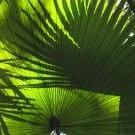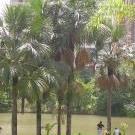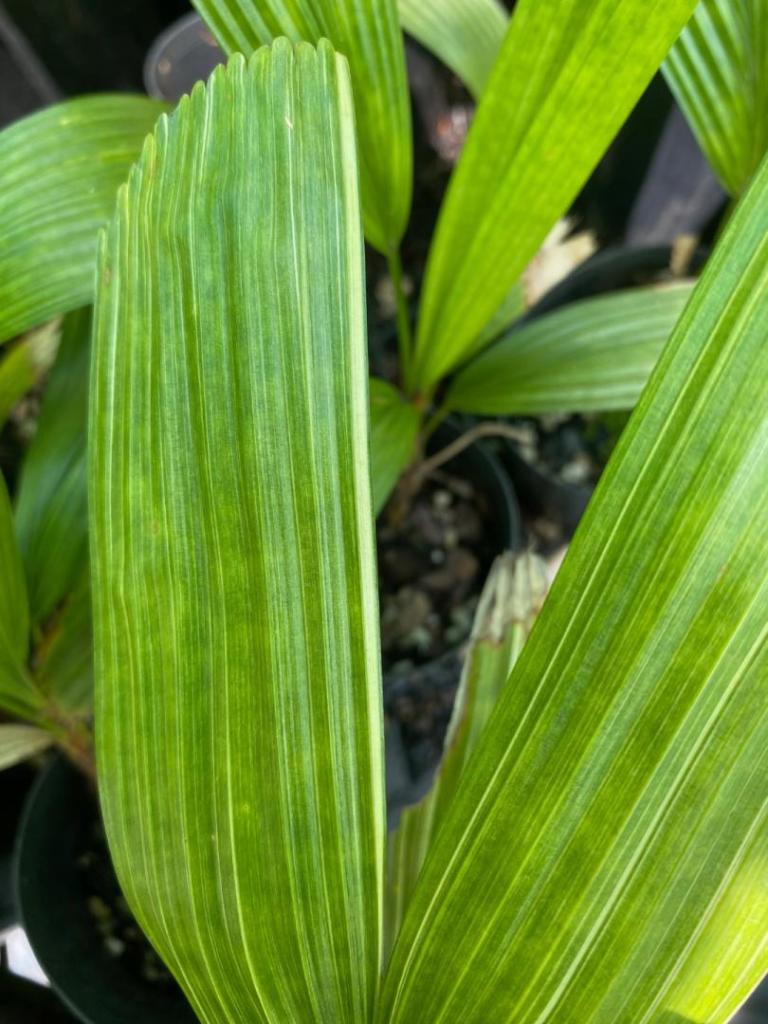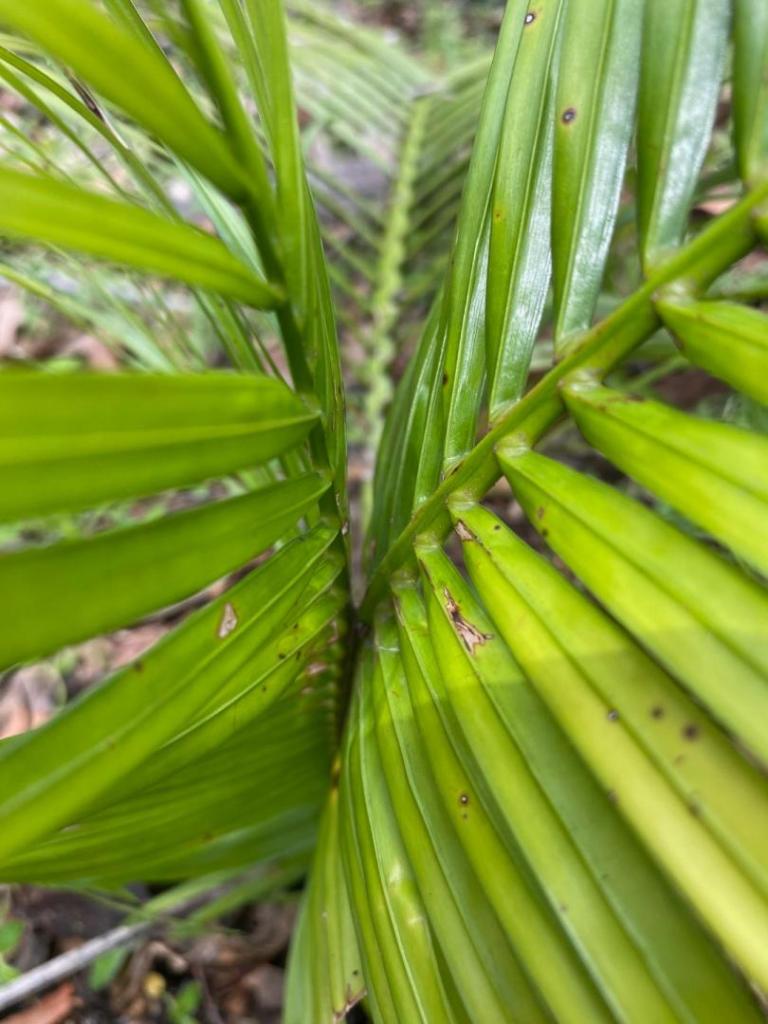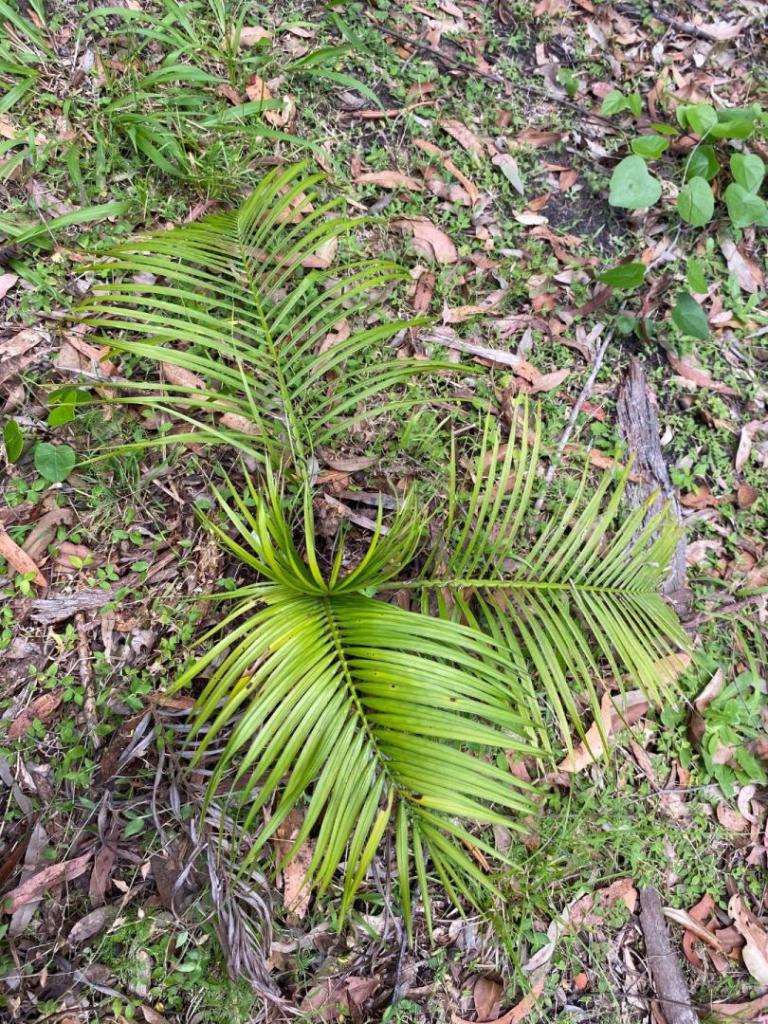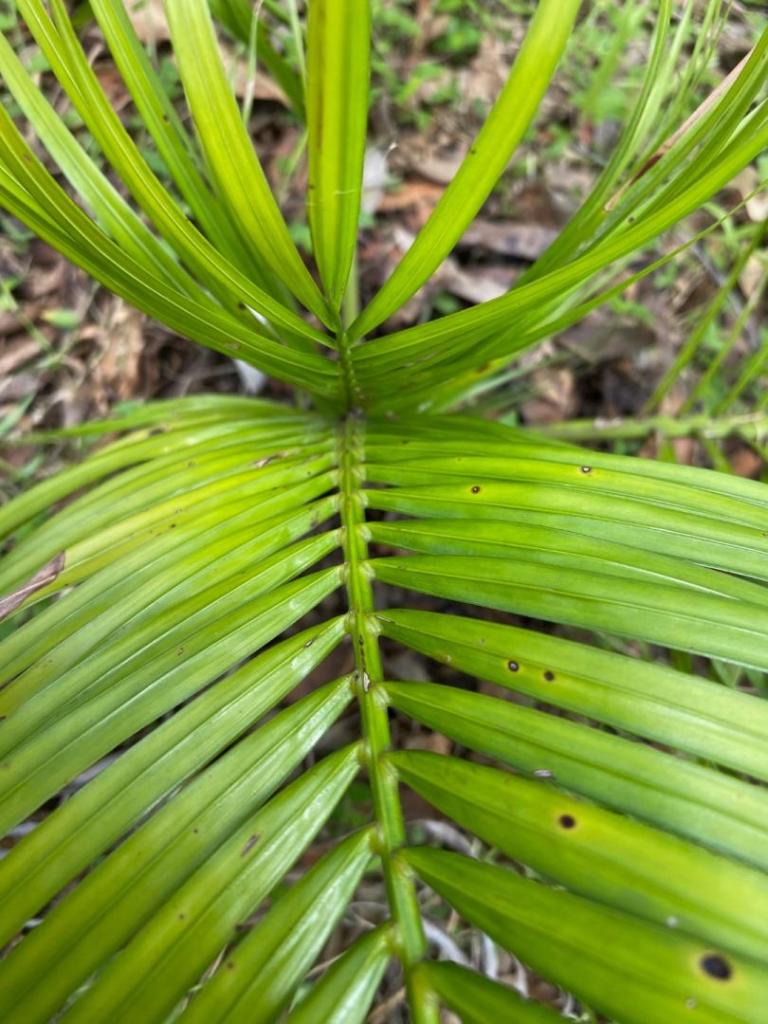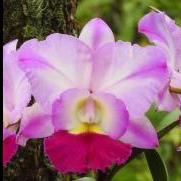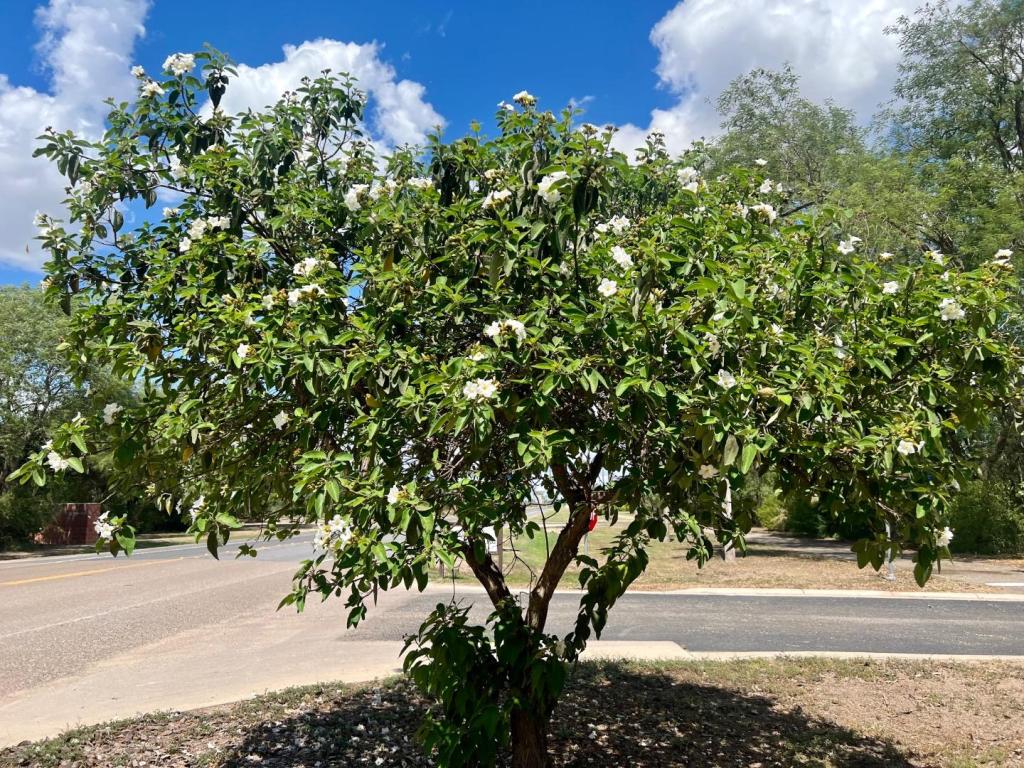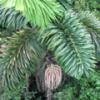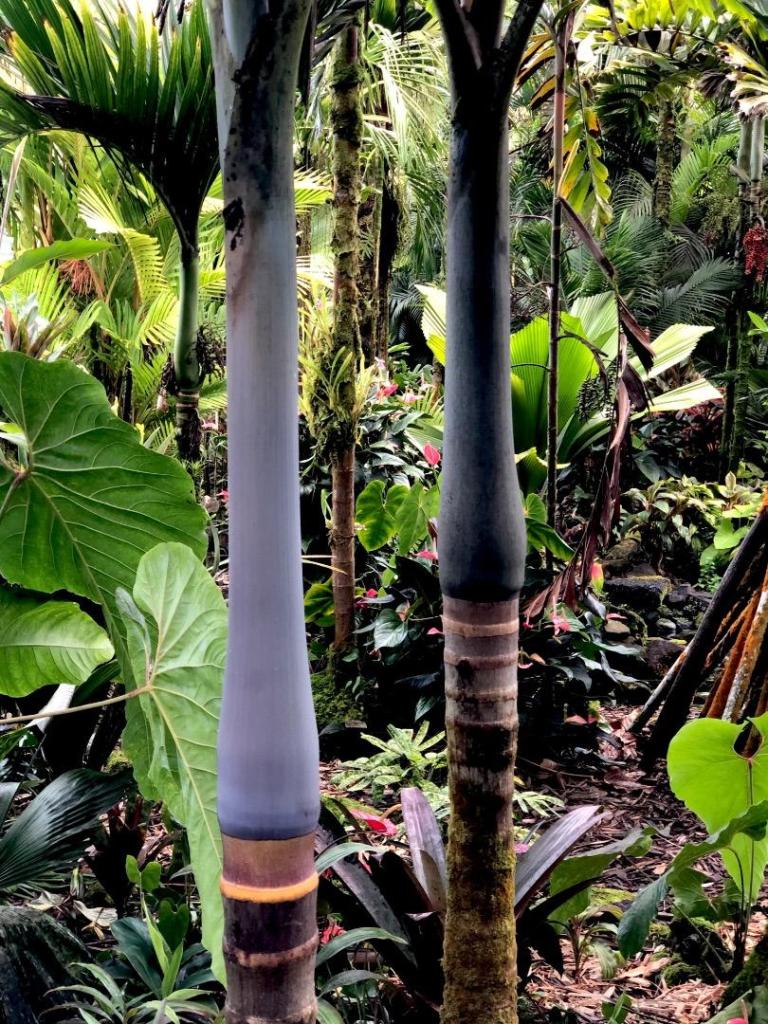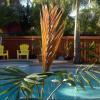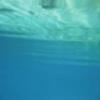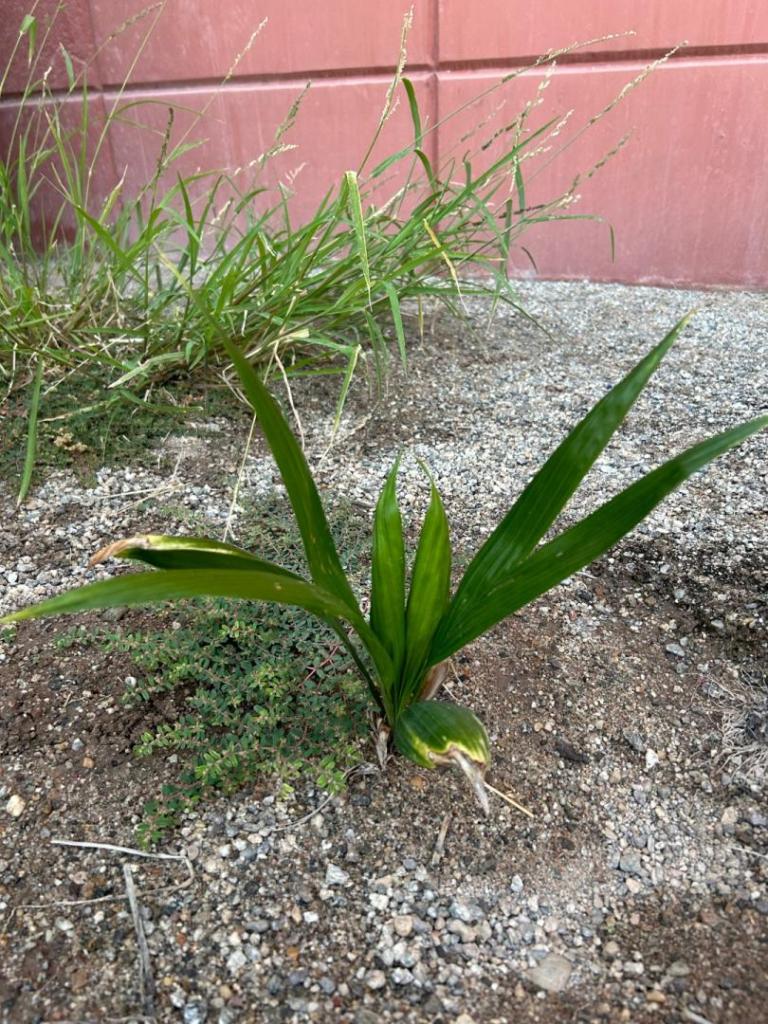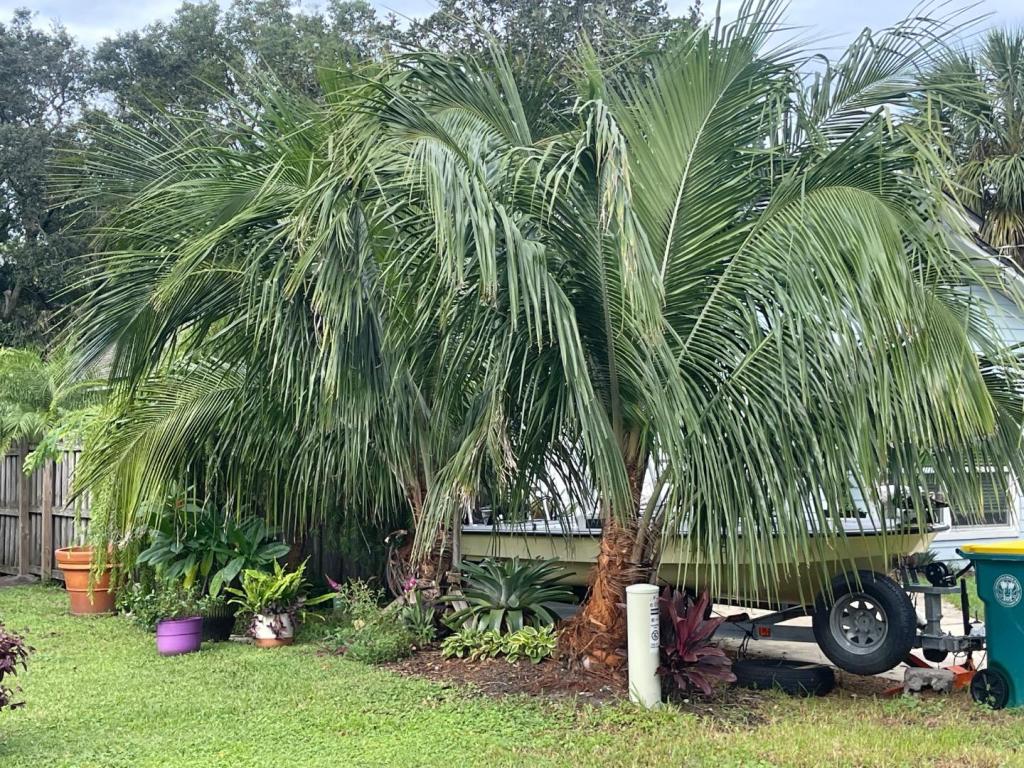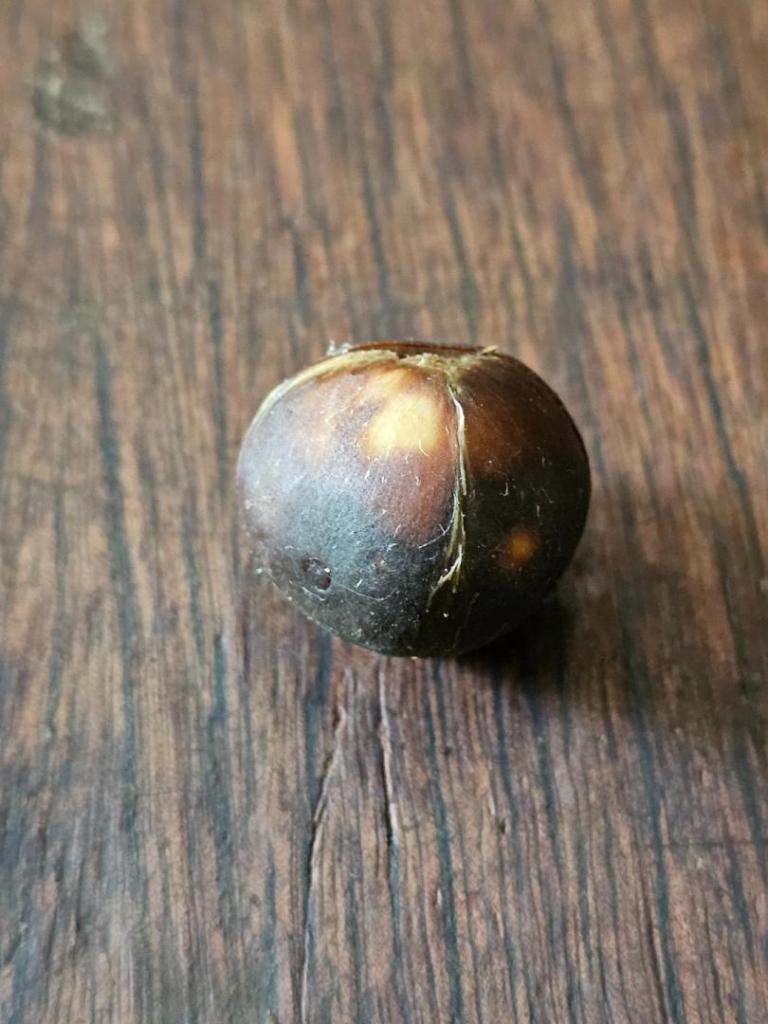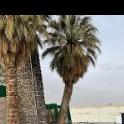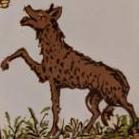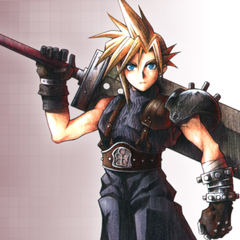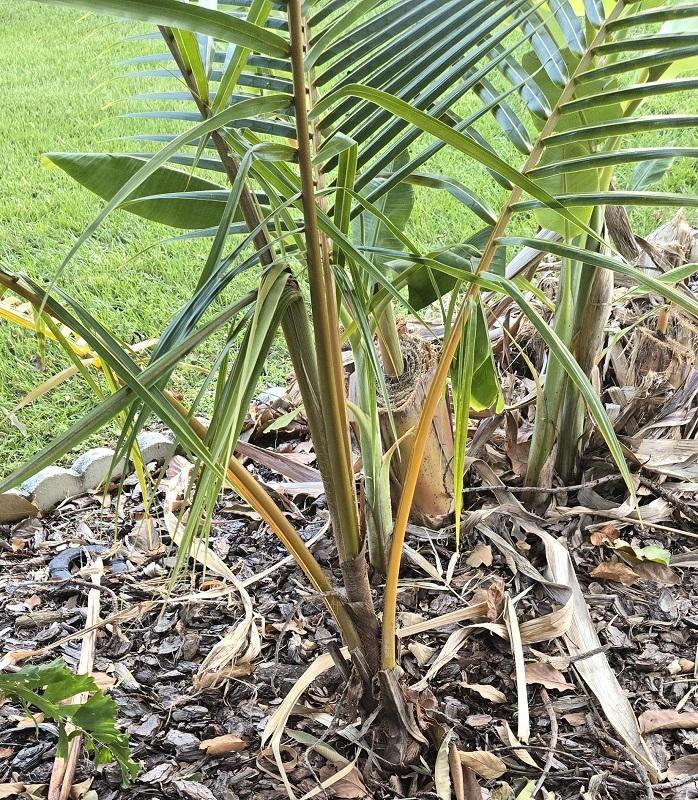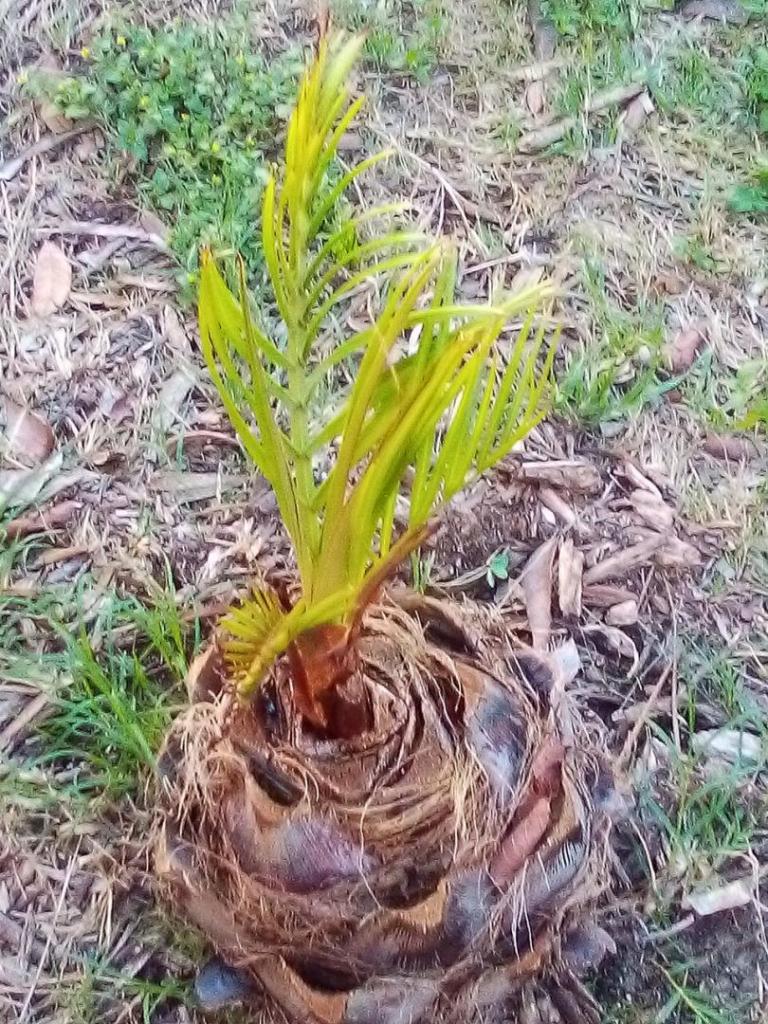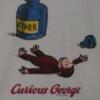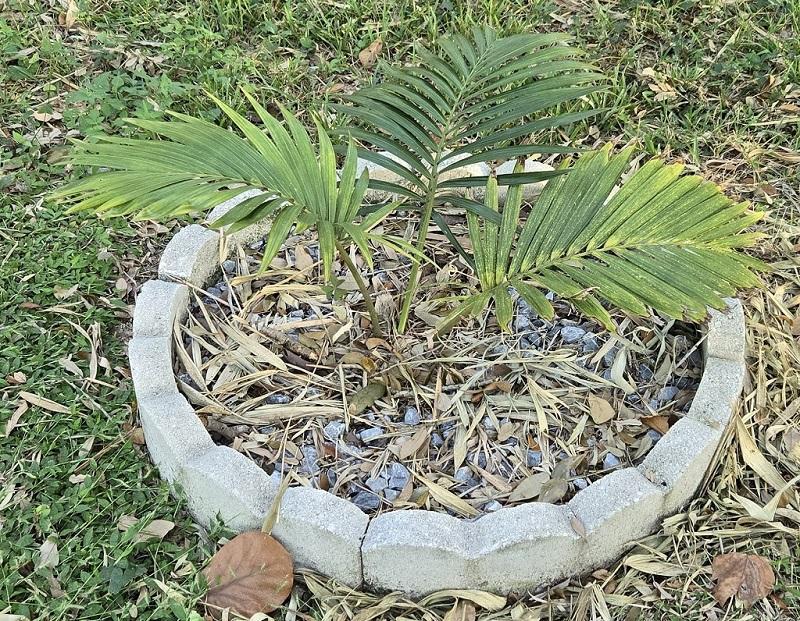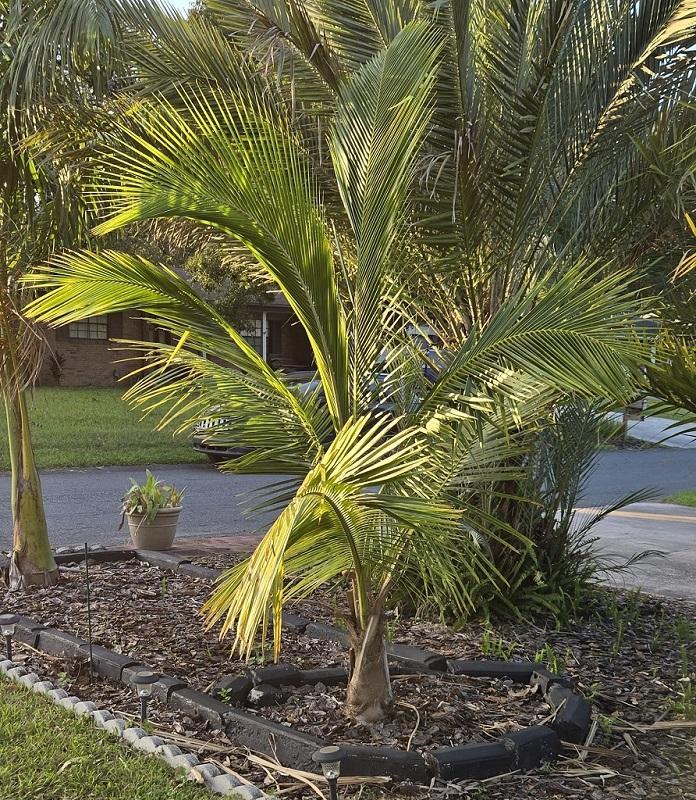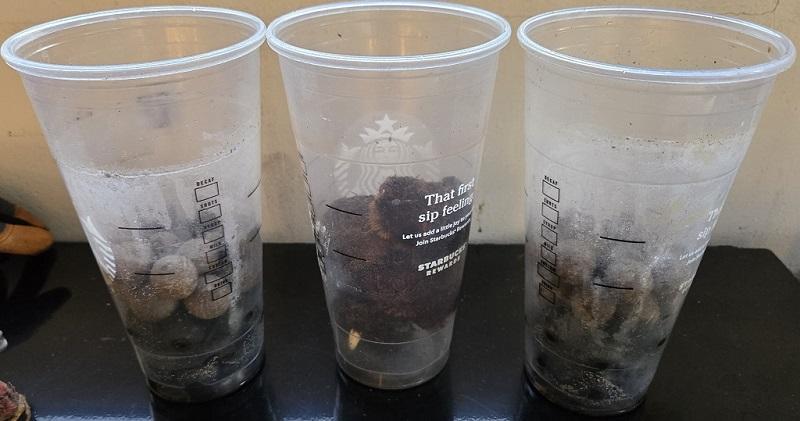Leaderboard
Popular Content
Showing content with the highest reputation on 10/25/2024 in all areas
-
I germinated 600 dasyatha and out of that 600 I got one special variegated seedling. At first I didn’t pay much attention to this little seedling but I still kept an eye on it noting where it was in with its cousins. Sitting there growing like the rest it started to continue to hold its variegated leaves each new leaf still had variegation. Either one in million or a freak of nature it will be one special little plant if it holds onto its variegation. Iam sure if it does stay true iam sure it will be one little palm that would be wanted in a collectors garden such as myself.9 points
-
HAHA - Oh I tease. October has been kind to the garden this year (with the exception of rain). With temps this month staying in the 80's/50's for the most part aside from a quick 2 day cool snap mid-month it's been quite wonderful. Our 10 day shows highs in the 80s and lows around 60 which I will take as long as mother nature wants to provide it! Nabbed a few image from the gardens: Hopefully the rack of namwahs has some time to mature. (doubtful) but one can wish.9 points
-
I noticed today my sp bef has a fused leaf something I have never seen before on a palm. I did see on palmpedia a picture with a bef that split in two so it may be a genetic trait with this species. Either way it’s an unusual thing more commonly seen with fascination traits in plants perhaps it’s a form of fascination in palms who knows but for now I will see what the next new leaf does as to where the new spear comes from so it may split in two yet.4 points
-
I think that this is a beautiful palm, BUT it is deadly. It is covered with needle-sharp spines. One of the most lethal palms in my garden. Definitely 'look but don't touch'. Don't plant close to walkways or anywhere you will need access. Seeds germinate easily. Moderately fast grower. Attractive bow tie leaflets. Did I mention the horrible spines?4 points
-
4 points
-
Okay, these were bought as seed February 2016 from RPS. First picture (July 2020) shows a difference of one year in ground versus still in containers. Second picture is today, October 2024, approximately 8 years from germination. Could be location, but she's definitely put on some size in 4 years. Tiki head for scale is 2 feet.3 points
-
3 points
-
A neighbor has two that were planted in 1986. They are huge have dropped many seeds Im sure, and they are a trimming nightmare if you want to remove the dead leaves. The over trimmed ones are likely from growers who found them easier to trim with less leaves and their thorny petioles. Here are the two palms, over 30' tall for sure and about 25 foot wide. a closer shot of one3 points
-
Coconuts in Florida are definitely confusing and I think the naming isn't very helpful because there are a few "subtypes" within each variety that arrived to Florida from various sources. Last I heard, the palm that's the source for the Calusa nursery is a nice tree on Marco Island typical for what I call the "Peninsular" Jamaican tall, which is the same type as the two Jamaican talls at Kopsick. This type does have a bole at the base, but it's not as pronounced as the Florida Keys type, and it's slightly faster to gain trunk from a seedling. At this size, your tree does look a little suspect, as I'd expect wider spacing between the trunk rings, but that can be variable at this stage depending on a lot of factors. The tree that I was told is the parent tree to the Calusa Jamaican talls is this one: https://maps.app.goo.gl/QgzdQr59jYvbPS7p8 The Jamaican tall present in the Keys is a distinct variety in my opinion from what I've seen. The coconuts are smaller (though with a very distinct elongated shape), the bole at the base is more pronounced, it is more commonly pure green in the petiole (with bronze-green being less common), and it is very slow to get going. Panama tall is also present in Florida in a weird way. A lot of material came from Panama through Jamaica (aka the Jamaica San Blas coconut), but there has been importing from Costa Rica as well (and possible other areas). I've seen some palms that were true to type and some that aren't. The true Panama tall has a very large trunk that is straighter than the Atlantic type, and the leaves don't extend as far below horizon. The PT coconuts at the USDA are this type (I have some pictures in a thread about this), but the ones at Fairchild are lacking some of the characteristics of true Panama Tall. The coconuts previously sold by Dave Romney are also the true Panama tall with a large straight trunk. The photo below shows a good example of the trunk difference between Malayan Dwarf, Fiji/Samoan Dwarf, "Atlantic" tall, and Panama tall. IMO most of the Panama tall sold in Florida are probably something other than 100% true Panama tall unless they're from the USDA or Dave Romney. As far as coloration, I've seen similar coloration as Jeremy's tree with true Panama tall, so I wouldn't let the coloration be the deciding factor, but rather what it grows into once it's trunking. The Fiji dwarf Jeremy has definitely looks wrong. This variety is known for producing off-types in Florida and I really trust the Hawaiian origin ones more than the Florida origin ones. One thing to note as well is that Hawaiian tall is very distinct from Panama tall. Panama tall shares more in common with the tall types in the Philippines rather than those from Hawaii and the South Pacific. Due to the distances and time under cultivation, there are many distinct varieties from this region, but only the Hawaiian tall is really available in Florida. It's the fastest growing coconut we have available to us, and the fronds tend to be longer with more distance between the leaflets than some of the other varieties here. Personally the Hawaiian tall is my favorite to grow.3 points
-
For me, Chambeyronia put into the ground young outperform those kept in pots. I’m in Melbourne, Australia with similar average temperatures to certain parts of Northern California.3 points
-
I have found like most palms they take time to establish roots then they explode. Usually around 2 years they will start fattening up and before you know it 4 years later they're too tall to maintain.3 points
-
I looked for a good example of this subject on this forum but found none so I thought I would help document the speed of the ever popular queen palm. There have been many comments over the years on how fast this palm is and there's an excellent example from an old thread from the main forum. I'll follow up with what I have experienced here in the RGV of deep south Texas. Purchased this palm as a 7-gal with approximately 9' overall height in spring, 2023. Here it is a year and a half later in October 2024 with the container next to it for scale. It's approximately 13' overall height now - roughly 2.67' per year! The base has really beefed up too.2 points
-
I wouldn't really call it a garden, but I'm semi-experimenting with palm trees in El Centro, CA, in the Sonoran desert. I don't have any land, so am planting them at one of my works and unfortunately it is under construction and irrigation is frequently cut off when I'm out of town and I return to many dead palms. It's very frustrating. Anyways, I've had fun experimenting with palms, and have unfortunately had many untimely deaths due to irrigation being cut off or getting run over by construction machinery. I'd like to highlight the African oil palm, however, and ask if anyone else has tried them in California or Arizona. This palm is 2 years old from seed. It has spent one summer and one winter in a pot and one summer and one winter in the ground and has been tolerating FULL SUN from noon to sunset on a west facing wall without any issue! I am so shocked. It is frequently 120 F here.2 points
-
I believe that one was located in the parking lot of the World Birding Center/ Bentsen- Rio Grande Valley State Park. If you head West on 83 in RGV, right around Rio Grande City the terrain becomes more arid , the thick mesquite scrub brush that was cleared 100 years ago in the RGV returns, and you will sporadically see Mexican Olive trees mixed in. Along Falcon Lake they are numerous . They are easy to spot when in flower.2 points
-
2 points
-
2 points
-
2 points
-
It’s pretty normal in Chrysalidocarpus Richard. I’d be willing to bet 2 spears are about to emerge and that will be the first trunk split. I’ve had C decipiens do the exact same thing.2 points
-
2 points
-
Keith, I don't know if FIT has any of his palms from the Daytona property, I think he just helped them to plan the collection back in the '60s (and perhaps he did donate palms at that time...that part's not clear). FIT has a page dedicated to his life and activities here. I think it's tragic that he suffered the very punishing wrath of the '83 and '85 freezes just before his death. I know Doris's daughter, she was a neighbor of ours on Big Pine Key. One evening while out on a walk, she was outside her house and I asked her about a large, trunking Arikury Palm in front of her place, as I knew it was a very unusual palm. She replied that it had been given to her by her stepfather, who was the founder of the Palm Society. I looked at her and said, "Dent Smith?" You could have knocked her over with a feather!!! Interestingly, another neighbor (halfway between our house and hers) was Stanley Kiem, who was longtime superintendent of Fairchild (and a close friend and co-adventurer of David Fairchild) and also one of the small group of inaugural members of the IPS when Dent Smith created the society. When I informed her of this coincidence, she said she had no idea he was her neighbor, nor his relationship to her stepfather and the IPS. It just goes to show that the world is a lot smaller than we think, and sometimes people with strong links may coexist in close proximity and never even know the significance...2 points
-
Yes, so many urban varmints. A family of raccoons ate our abundant passion fruit crop in days and rats defoliated our Ravenea glauca for nesting material (Ravenea glauca has been slow but steady btw, seems to be a durable plant). Since we're in the outer avenues and have limited leeward space, strong and salty winds are also a major consideration.2 points
-
Starting to cool a bit average 76 degree highs on my home weather station (For 30 days) wind protected box better than average 89 degrees LOL2 points
-
Thanks for the shared experience Chris. Yeah, I assume it will want as much heat as we can give it and I think this location is the best we can do. It was in a 1 gallon pot and the roots were just starting to circle. I failed with a Cyphophoenix elegans in the same spot but didn't provide any shelter for it...hopefully this fares better. @Jim in Los Altos noted during my visit that he generally just throws palms in the ground when very young and sees what sticks. As long as we can keep the rats, gophers and slugs away, I'm inclined to do the same.2 points
-
I would definitely recommend a good layer of mulch and plenty of water when it's hot. It takes time for palms to establish so they might look bad for the first year or two but mulch, water, and fertilizer will make all the difference. Let the little one acclimate and it should take off as long and frost doesn't hurt it.2 points
-
Very nice Hedyscepe you’ve got going there. I think the weather has been very similar to yours lately but we are starting to shift towards summer a bit now. That being said yesterday morning was frigid for late October. We got down to 5C and then the max was 27C. Next week we’ve got a string of high twenties and possibly a low thirties day. I did see Perth will possibly hit 40C next week, so if it does that what will summer be like. Ocean temps are up pretty much everywhere too. Could be an interesting cyclone season.2 points
-
@Merlyn: The Satakentia is under oak canopy and gets all day dappled light. They grow fine under those conditions. @D. Morrowii: Appreciate it! The cleanup pile just got hauled away today, so there is a big hole in the front yard to fill in with dirt... from somewhere. @flplantguy: I have a feeling you'll enjoy growing them. One thing they tend not to like is changing light levels. @mnorell: I appreciate you weighing on on the coconuts. Certainly, it was good to have someone point out that was I had labeled on the pot as a Butia was actually a stray Roystonea seed all of those years later, with time for me to move it further away from the house. The "Fiji Dwarf" has been the topic of at least two other conversations as the form look more like a Malayan than a Fiji Dwarf. The first person to say it didn't look like that particular variety was @Plantking165 during a garden visit. Time will tell, but I suspect you are right. It was purchased at Premier Growers in St. James City. You may be right about the others as well As for the history of all of the coconuts, the "Atlantic Tall/Jamaican Tall" and the "Panama Tall" came from Calusa Palms Nursery by request for those varieties. There's certainly no harm in @Zeeth or others jumping in and stating an opinion. To make the Panama Tall look-over easier, here is a recent close-up photo of the petioles: With the CFPACS 2024 Fall Meeting coming up, I only had time to clean up one set of plants, so a mini-update with the Latania lontaroides between the Carpentaria acuminata twins.2 points
-
I have lost two Foxtail (Wodyetia Bifurcata) in Southern California. I have learned that they are hit or miss here . I do know they love heat so yours should be fine once it hardens off . As Merlyn says they are usually grown under shade cloth to get max height when young . They like fast draining soil and do not like “wet feet” so , once established , they can have short dry periods. Corona is warm so they should like it there . The new growth should be tighter held leaflets and slowly turning dark green. The older fronds will eventually die off , as you are seeing there. After what I learned here on PT I have decided to give these another try . Mine are smaller but coming along nicely , I am about a year ahead of you on hardening off and they are picking up speed . They were not that healthy when I got them ( 5 ) from a private grower. HarryOn the larger one you can see the original frond with the leaf spacing compared to the new fronds that are tightly held leaflets. They keep getting darker with age , you can see the lower frond almost completely dark and the top frond that just recently opened just starting to turn dark . The smaller palm on the left is completely dark. Again , you can see the difference of the new frond versus the old. I am keeping my fingers crossed as we head into the second winter for these guys . They are the best of the five I have. Harry2 points
-
@nessa I'd guess it's mostly sunburn from the hot/dry summer and heat reflecting off the wall. Usually palms are grown under shade cloth, so the existing fronds might burn when put into full sun. The new frond looks a little more "compact" than the older ones, and also in the pictures looks pretty green. If that's the case then it's adapting to the sun and should look better when the next set of fronds completely grow out. I'd guess it needs more water, but I am in swampy FL where everything is drenched in daily afternoon thunderstorms. Hopefully some CA people can suggest watering amounts.2 points
-
2 points
-
2 points
-
2 points
-
Fall Update III - Chrysalidocarpus Corner et. al.. Chrysalidocarpus prestonianus: The twin on the left was getting one of those weird fungal infections. It received a Banrot treatment that seems to have wiped the fungal issues out. If you have a palm starting to show fungal issues, this might be a good way to stop it in its tracks. Chrysalidocarpus pembana Chrysalidocarpus cabadae Chrysalidocarpus lanceolata Chrysalidocarpus leptocheilos: The newer palm has a better location and is outgrowing the older specimen. Chrysalidocarpus decaryi Chrysalidocarpus lutescens Satakentia liukiuensis Hyophorbe lagenicaulis Hyophorbe verschaffeltii Chambeyronia oliviformis Archontophoenix cunninghmania: The may drought nearly killed both of these. One is OK, the other is 50/50 on ultimate survival. Howea forsteriana: The drought hit these, but not as bad as I thought consistent temperatures over 95F with no rain would do. You can still see drought damage on my quadruple clump and the smaller seedling right next to them, but they are doing well considering the circumstances. Licuala grandis Allagoptera arenaria: This one is back to flowering, although it is hard to see in the photo. Cocos nucifera 'Green Malayan' Container Photo #1: From front to back, Phoenix theophrasti, Medemia argun community pot, and Hyphaene coriacea. Container Photo #2: The outside rack holding Veitchia arecina, Dictyosperma album 'conjugatum', a recovering Frankenbrahea, Livistona saribus, Kerriodoxa elegans, and a few other gems. Container Photo #3: A few more Medemia argun and Hyphaene coriacea babies. Container Photo #4: A few Jubaea chilensis seeds and Hyphaene coriacea seeds. As you can see in the middle cup, Hyphaene doesn't mind sprouting with no medium around it. Probably two more updates coming. With the hurricanes, it's been a lot to clean up sections of the garden.2 points
-
My pineapple guava is looking the best it ever has since I had the old growth tree down. The tree was dying and going to be a real death trap to anything under it including anyone walking around it so it had to be removed. And since then everything under and around within a 50 metre radius has said thank you and is loving the extra water and light. The fejoa no exception iam actually looking forward to getting a few fruits for the first time in 23 years. An absolutely beautiful tree in flower and the fruit is a bonus IMG_5762.mov2 points
-
Thats reallllllyyyy gooodd that means the tree is 100% still alive (+ The frond doesnt come out) So yeah id say water regularly cut the COMPLETLEY brown palm fronds 3 inches or more away from the Boot (Where the palm frond meets the trunk) with shears or scissors (Cleaning the scissors with alcohol will help extra on disease prevention) It still has a very good chance with all that info.1 point
-
1 point
-
Hey Charlene, I’ve grown the ‘Alba’ before from seed, and you can start to see yellow coloring on the young leaf sheath while still young and bi-fid. I believe the green standard form stays bright, deep green. Based on your photos, I can see some yellow starting to show. Good chance yours are ‘Alba’. These are also very cold sensitive, anything below 40 degrees can outright kill them. Here’s a few photos to reference as they get larger.1 point
-
Agree with Tim. I have seen it on both one of my Chrysalidocarpus decipiens as well as the Chrysalidocarpus bef below. Sometimes, the leaflets emerge from the same rachis as a set of 3 or 4 coming off in different directions before the rachis splits and each goes back to having two sets of leaflets for the terminus of the pair of rachis. After the split leaf sharing part of the rachis, the next leaves are fully split and the trunk splits above that point.1 point
-
The large Hydriastele seem under represented on here and in cultivation in general. Rarely see this one or others such as H gibbsiana. The H ledermanniana in this thread are beauties!1 point
-
A great bit of history there, thanks for sharing Michael and Keith. Stories like these colour our relationships with both the palms that we adore and the people we share them with...a rare respite from an increasingly polarised world. Cheers, Jonathan1 point
-
I bought a second one to provide canopy for other palms in a different part of the property. It was about the same size as this one was at purchase and it's growing at the same rate as this one. Not a problem here but further north of here can get some queen killing temperatures every couple of decades but you can still grow a good sized palm pretty quickly! Houston, San Antonio and even Austin had some massive queens prior to 2021 but sadly the vast majority were wiped out. Hopefully normal winters return to those areas so that we'll see large ones again soon.1 point
-
As Keith mentioned above, Dent Smith was the original founder of the Palm Society, and he included as inaugural members the most famous names in 20th-century palm studies and horticulture (including Fairchild, Montgomery, et al.). His property was in Daytona Beach, occupying four acres or so on the Halifax River. He was able to grow a large collection of marginal tropical species despite the occasional destruction from bad winters. He died in the mid-'80s but his wife, Doris, kept it going for decades until she passed away. The property was sold in 2013 but I think may still be relatively intact. He was highly involved in the planning and execution of the Florida Institute of Technology Botanical Garden. This brochure explains some of the species at that Botanical Garden today, largely due to his efforts. You can find much info on his gardens and his trials and tribulation by searching old issues of Principes/Palms on the palms.org website.1 point
-
I see my Acoelorrhaphe wrightii has finally started to develop trunks, sort of, after years in the ground. It's sheltered in the shade of a Sabal. It attempted to bloom this year but the inflorescence was not successful. It's among my least favorite palms to prune as the petiole thorns are always ready to 'attack' the unwary. 😬1 point
-
This year was the first year out of 10 yrs living here with so many royal, christmas, foxtail palms. This year was dry Dec. to May. ; Usually at least one good rain somewhere but not this year. So palms 2cm to 10cm diamete have huge long holes bored in them. Gold gooey insides coming out taht is the roual palm trying to heal itself. but the sides of the tree; usually near the top are being eatin out; I've not noticed it till too late. I've topped off over 30 royal palms; dozen christmas palms. and a few foxrtails all with side entry. The largest was 5 meters tall; 8 cm dia or about 3 in; diameter where its still soft to get thru. I have had red palm weevil problems thuse have traps otu all over the yard to lure them in buckets but never had them eating out the trunks. Normal behaviour is eatign the branches at the beginning widest part from the tree; to kill the branch. Over 5 yrs wth lures of both red palm weevils and rhino beetles (for coconnut trees) I'l can easily catch a dozen a week;; depending on wind , sun, rain conditions. I keep moist mulch piles of dead branches, mulch, cuttings, that turn into rich black; coconut dirt where the rhinos' live to lay their eggs; then I just turn in over every 2 months to catch the larvae that is usally big; whiteish- about a month away from full developement. The red palm weevils are not atrracted to these piles., only rhino beetles. Thats ongoing but this tree boring; is new. I can try many sprays but told imidacloprid is the only thing that kill both beetles. Just don't know if its the same boring the trunks out or some other crittre. Mac Lueng is a long tree in clusters; like a palm but its getting chewed on also. i can come back to attach photos1 point
-
I never heard of Dent Smith's palm! Which town was he in? I lived in Gainesville, FL for 6 years so am surprised I never heard of it. If you are in the Southern California, I could probably bring you one or two next week for free. I will have to double check that my friend who is watering my plants hasn't killed my "extras", but I believe I still have a few in pots. I think the deep green is what surprised me the most. It is so weird to see such a delicate looking palm with deep green foliage, as a seedling, to receive full Sonoran Desert sun from noon to sunset on a westward facing wall.1 point
-
I have one I planted in about 2005. It was as a seedling. It stayed very messy looking until a few years ago. That was when I trimmed it for the first time. After trimming it looked decent! Restarting this thread made me go and revisit today! The first two pics are before I trimmed it up. The next three are after trimming. It's starting to look special to me! The underside of the leaves is very silvery! The last pic the snips are there for scale. I will turn 67 next month so if I live to 100 it will grow from special to spectacular!!! Randy1 point
-
1 point
-
1 point
-
1 point
-
1 point
-
1 point

